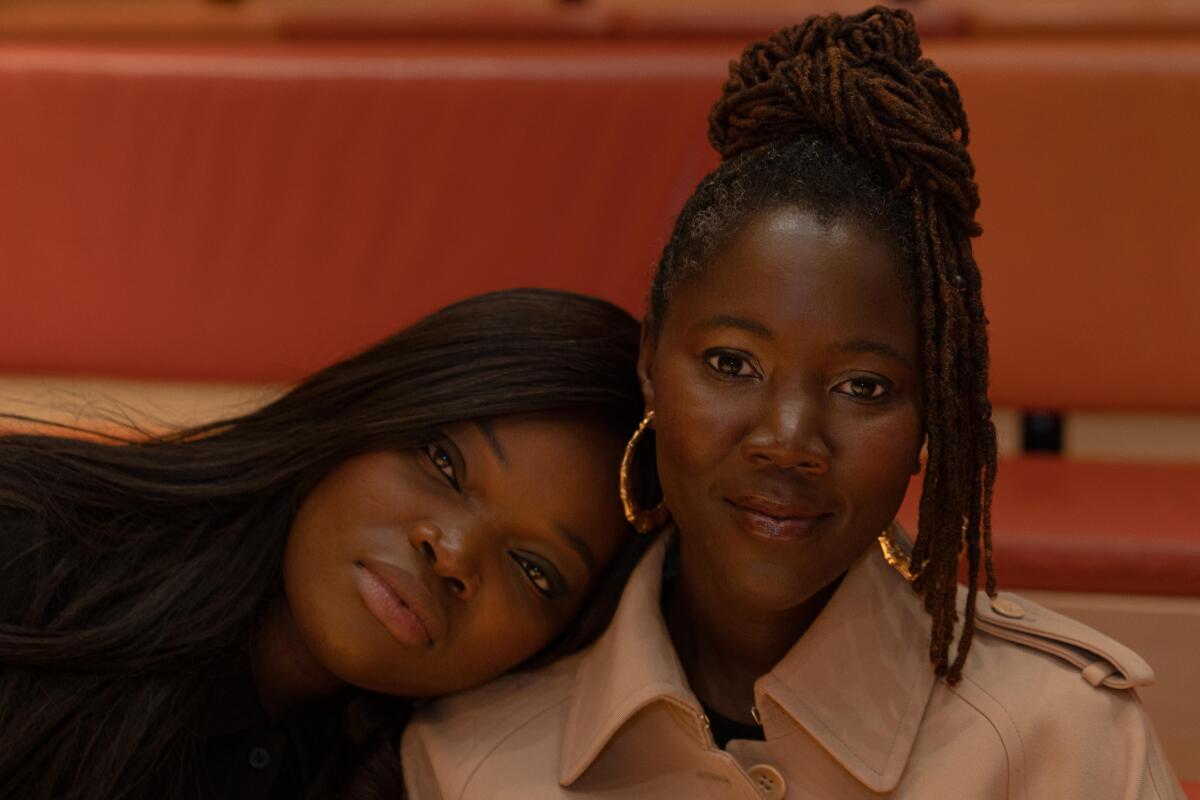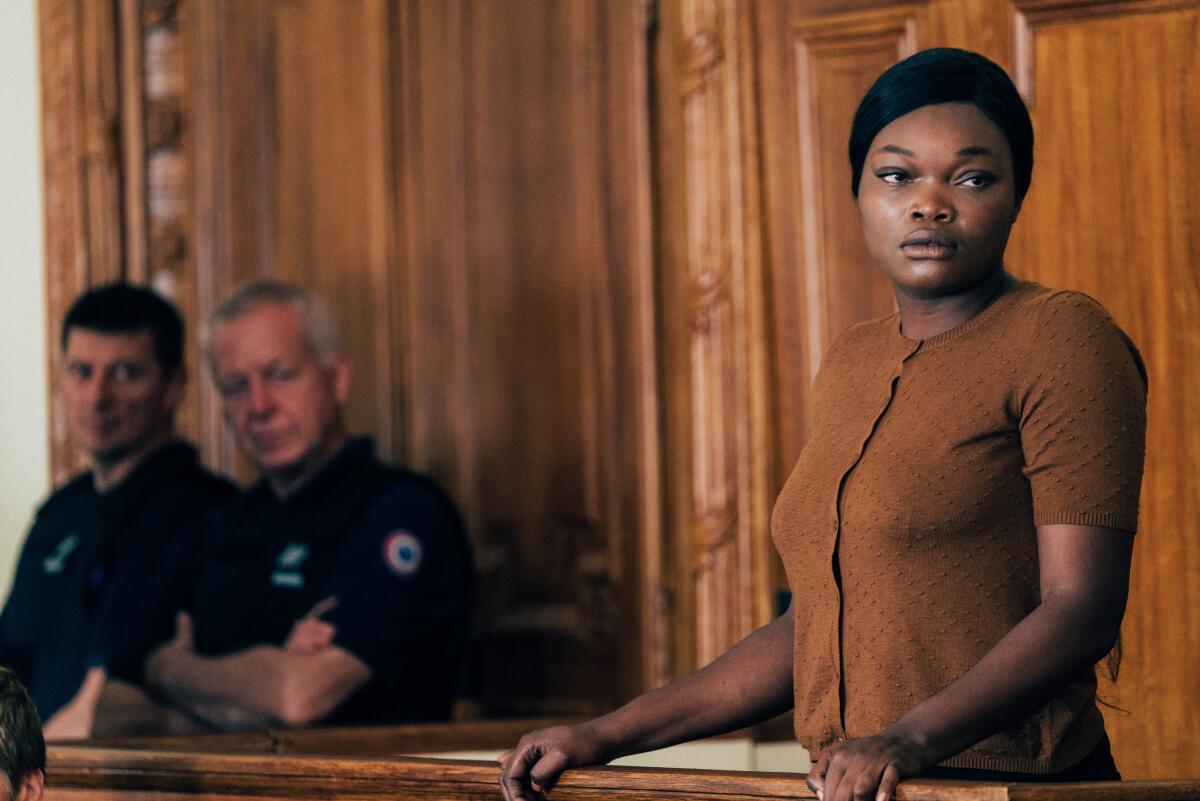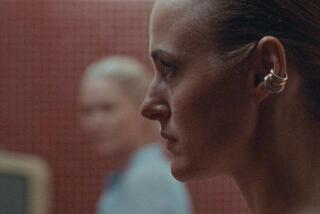Inside the tale of a real-life child killer so intense it made its director faint

In 2016, filmmaker Alice Diop attended the trial of Fabienne Kabou, who had admitted to killing her 15-month-old daughter, Adélaïde. For one week, Diop sat in a courtroom in the French town of Saint-Omer and listened as Kabou described leaving Adélaïde on the beach of Berck-sur-Mer, where her body would be swallowed by the waves and later discovered by a fisherman. When asked why she committed the crime, Kabou simply said, “Witchcraft. That’s my default explanation because I have no other.”
At the time, Diop was pregnant. The story of a Senegalese immigrant, at odds with her own mother, resonated deeply with the filmmaker. It brought up fundamental questions about race and French colonialism, as well as the most obvious one: How could a mother kill her own child? Until then, Diop, who was born in France to Senegalese parents, had made only documentary films. But after the trial ended, she decided to explore Kabou’s story through a dramatic lens. The resulting film, “Saint Omer,” is somewhere between fiction and documentary.
Shot over three weeks in the actual town of Saint-Omer, the film follows a literature professor named Rama (Kayije Kagame) who attends the trial of Laurence Coly (Guslagie Malanda). Laurence is, in essence, Kabou, while Rama is a fictional conduit for Diop herself.
“Everything that happened as far as the trial is concerned is practically a verbatim transcript of the trial,” Diop explains, speaking over Zoom with the help of a translator. “[Kabou’s] style of language and her interaction with the prosecutor and the people in the court was so amazing to me, and that is in the film also. The film was born of the texture of that exchange and the quality of that dialogue that I could not have made up even if I was the greatest dialogist.”
She adds that including fictionalized aspects “allowed us to explore all these questions inside the documentary part of the film.”
Diop co-wrote “Saint Omer” with the film’s editor, Amrita David, and Marie NDiaye, a well-known French novelist and playwright. Diop was particularly interested in working with NDiaye because she felt that Kabou’s story had a novel-like sensibility. In fact, during Kabou’s trial, which resulted in a 20-year prison sentence, many remarked on her unique quality of speech and unusual cadence. Diop wanted to preserve that in the film, which resulted in 20-minute, one-shot takes of Malanda embodying Kabou’s actual testimony. Malanda says Diop encouraged her to speak as if she was reading Marguerite Duras.
Jafar Panahi’s “No Bears,” Todd Field’s “Tár” and Joanna Hogg’s “The Eternal Daughter” are among our critic’s favorite films of the year.
“Because of the colonization by the French in Africa, the French they speak is not everyday French,” Malanda explains. “It’s closer to literature, in a way. And in the case of Fabienne Kabou, it’s clearly a style she gives to herself. It became a singularity. She’s a bit like an alien with this language.”
“The greatness of her vocabulary and her expression allowed her to create a distance with the crime that she committed,” Diop adds. “Like in a great novel where you become engaged in understanding why it happened or how it happened, rather than be focused just on the horrible crime.”
While filming the courtroom scenes, which were shot chronologically, Diop never called “Action!” or “Cut!” Instead, she simply turned on the cameras and gave the actors space to genuinely experience the dialogue.
“I was not interested in fabricating a fiction but in capturing a truth in the emotion and an intensity,” Diop explains. “Those very long one-shots allowed me to capture that, as we were not re-creating but living the actual moments. I wanted to create the feeling that the actors were actually living the experience. They were not performing.”

She adds, “My experience when I was watching the trial was I was absolutely riveted by the power of emotion and the intensity of this trial. All my effort and my stage direction [was] geared towards bringing the audience to have the same intensity of experience I had.”
Discussing the process now, Malanda describes it as “like my own trial.” To prepare for the role, she and the filmmakers spent a day observing the court case of a woman convicted of killing her husband. Malanda noticed a distinct sense of fear in the woman when she was called upon to speak her name to the judge, which she allowed herself to feel on set.
“I was her,” Malanda says of her character, Laurence. “So in that moment of trial, there was no judgment [and] no empathy. ... The empathy [for her] came before, when I prepared myself for the shooting, and after.”
In Part 2 of Netflix’s French hit, immigrants take on a corrupting force: Call it classism, racism, colonialism or all of the above.
By using the format of a drama to tell a factual story, Diop is able to arrive at an even more poignant version of the truth. For the filmmaker, who says she allows each project to dictate its own form, that truth is more powerful because it’s told with a Black woman at the heart of the story. Her “real, deep reason” for making “Saint Omer” was to present both Laurence and Rama as Black characters who go against stereotype and are thus relatable to any viewer.
“I wanted to propose the universality of the Black body,” she says. “The questions that are brought out are universal. When women watch this film, whether they’re Black or white or whatever [race], they have the same rapport with the film. They have the same questions about their own daughter or mother relationships. In this way, the film is universal.”
In making “Saint Omer,” Diop was searching for her own answers to these profound questions. She’s continuing to search for them. But through the process of creating the film, Diop and her primarily female collaborators did uncover things about themselves, as she hopes the viewers will do as well.
“It was as if all of us women on the set were constantly haunted by the presence of our mothers and children and we were having this dialogue all the time with these ghostlike ideas,” Diop remembers. “It is as if all the things that we would not have dared to tell our mothers, the things we had thought, the things we were afraid of, all these things were coming up for all of us. It was like a collective psychotherapy.”
At the end of shooting, the emotional intensity was so great, in fact, that Diop collapsed on the set.
“I fainted, and they had to take me away to the hospital,” she says. “It was as if after three weeks I had given birth to a monster. And the baby monster became a film called ‘Saint Omer.’”
More to Read
Only good movies
Get the Indie Focus newsletter, Mark Olsen's weekly guide to the world of cinema.
You may occasionally receive promotional content from the Los Angeles Times.











